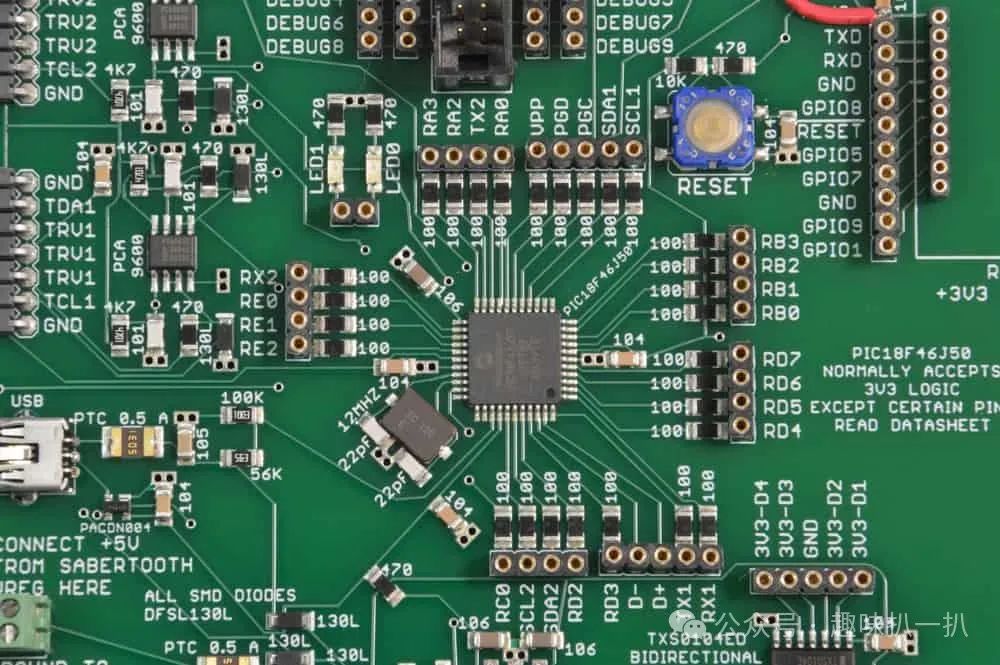In modern high-frequency microwave circuit design, accurately predicting the radiation loss of printed circuit boards (PCBs) has become a critical challenge. As operating frequencies continue to rise, the radiation effects of signals on PCBs become increasingly significant, leading to energy loss, decreased signal integrity, and potential electromagnetic interference issues. This article will delve into the comparative analysis of several mainstream full-wave electromagnetic simulation methods in the context of microwave PCB radiation loss analysis.Physical Mechanisms of Radiation LossThe radiation loss in microwave PCBs primarily arises from three aspects: transmission line discontinuities, resonant structure radiation, and leakage of surface waves at the dielectric-metal interface. When the signal frequency exceeds several GHz, these loss mechanisms become particularly pronounced. This is especially true for RF circuits using high dielectric constant (εr) materials such as Rogers RO4350B or Taconic RF-35, where the radiation effects are often underestimated.Overview of Full-Wave Simulation MethodsFull-wave electromagnetic simulation methods can simultaneously consider the complete set of Maxwell’s equations for both electric and magnetic fields, offering higher accuracy compared to quasi-static analysis. The mainstream full-wave simulation methods currently include:1. Finite Element Method (FEM)The Finite Element Method discretizes the computational domain into a large number of small finite elements, constructing local equations and solving the global equation system. In microwave PCB analysis, FEM is particularly suitable for handling complex geometries and non-homogeneous materials.Advantages:Can accurately model arbitrary geometric shapesSuitable for handling non-homogeneous and anisotropic materialsFlexible modeling for multilayer PCB structuresLimitations:High computational resource requirementsRequires additional techniques such as PML (Perfectly Matched Layer) for open boundary handlingSlow convergence for high Q-value structures2. Finite-Difference Time-Domain Method (FDTD)The FDTD method directly discretizes Maxwell’s equations in both space and time, achieving time-domain advancement by alternately updating electric and magnetic field values.Advantages:Time-domain analysis provides an intuitive display of electromagnetic field propagationA single simulation can yield wideband responsesHigh efficiency in parallel computingLimitations:Stair-step grids struggle to accurately represent curved geometries CFL stability conditions limit time step sizesLong iterations required for high Q-value structures3. Method of Moments (MoM)The Method of Moments is based on integral equations and only requires discretization of the conductor surface, naturally satisfying boundary conditions for radiation problems.Advantages:Efficient modeling of open problemsComputational grid limited to conductor surfacesSpecial optimizations for planar layered structuresLimitations:Complex handling of dielectric inhomogeneityHigh computational load for dense matrix solvingNot efficient for structures with variations in thickness directionComparative Analysis of Practical CasesUsing a typical microstrip bandpass filter as an example, we compared the computational efficiency and accuracy of the three methods in the 4-8 GHz frequency band. The results indicate:Computational Efficiency: For this type of planar structure, the MoM method has the lowest memory usage and the fastest computation speed; FEM follows; while FDTD, although fast in single-step calculations, requires longer time to achieve steady-state solutions.Accuracy Comparison: The S-parameters predicted by the three methods deviate from the measured results by less than 0.5 dB, but in predicting radiation loss, the FEM method is closest to the measurement results (deviation < 3%).Special Structure Handling: For RF PCBs with vias and micro blind-buried holes, the FEM method has a clear advantage in modeling accuracy; whereas for large-area planar array antennas, the MoM method is more efficient.Engineering Practice RecommendationsBased on the above analysis, it is recommended in engineering practice:For multilayer complex microwave PCBs, prioritize the FEM method for full-wave analysis.For antennas and open radiation structures, the MoM method is usually the better choice.For transient response analysis or EMI/EMC issues, the FDTD method is intuitive and effective.When resources allow, using two methods for cross-validation can enhance reliability.Accurate prediction of radiation loss is crucial for microwave PCB design, especially in millimeter-wave frequency bands and high-density integration designs. With advancements in computational technology, hybrid algorithms such as FEM-MoM coupling methods are gradually showing strong potential, warranting attention from designers.
CFL stability conditions limit time step sizesLong iterations required for high Q-value structures3. Method of Moments (MoM)The Method of Moments is based on integral equations and only requires discretization of the conductor surface, naturally satisfying boundary conditions for radiation problems.Advantages:Efficient modeling of open problemsComputational grid limited to conductor surfacesSpecial optimizations for planar layered structuresLimitations:Complex handling of dielectric inhomogeneityHigh computational load for dense matrix solvingNot efficient for structures with variations in thickness directionComparative Analysis of Practical CasesUsing a typical microstrip bandpass filter as an example, we compared the computational efficiency and accuracy of the three methods in the 4-8 GHz frequency band. The results indicate:Computational Efficiency: For this type of planar structure, the MoM method has the lowest memory usage and the fastest computation speed; FEM follows; while FDTD, although fast in single-step calculations, requires longer time to achieve steady-state solutions.Accuracy Comparison: The S-parameters predicted by the three methods deviate from the measured results by less than 0.5 dB, but in predicting radiation loss, the FEM method is closest to the measurement results (deviation < 3%).Special Structure Handling: For RF PCBs with vias and micro blind-buried holes, the FEM method has a clear advantage in modeling accuracy; whereas for large-area planar array antennas, the MoM method is more efficient.Engineering Practice RecommendationsBased on the above analysis, it is recommended in engineering practice:For multilayer complex microwave PCBs, prioritize the FEM method for full-wave analysis.For antennas and open radiation structures, the MoM method is usually the better choice.For transient response analysis or EMI/EMC issues, the FDTD method is intuitive and effective.When resources allow, using two methods for cross-validation can enhance reliability.Accurate prediction of radiation loss is crucial for microwave PCB design, especially in millimeter-wave frequency bands and high-density integration designs. With advancements in computational technology, hybrid algorithms such as FEM-MoM coupling methods are gradually showing strong potential, warranting attention from designers.